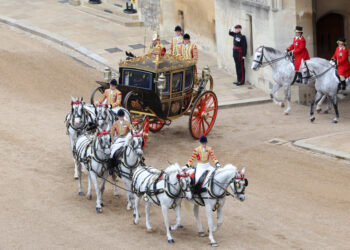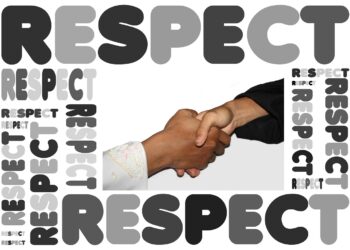 As the World Protocol Magazine Editorial Board, we take enormous pride in keeping this platform open to all experts from the numerous fields of business and protocol: Desirée Broussard, from Las Vegas, Nevada is the next of many who have taken the opportunity of working together with WPM.
As the World Protocol Magazine Editorial Board, we take enormous pride in keeping this platform open to all experts from the numerous fields of business and protocol: Desirée Broussard, from Las Vegas, Nevada is the next of many who have taken the opportunity of working together with WPM.
Ms Broussard is the Chief of Protocol at the U.S. Air Force Warfare Center Nellis Air Force Base inLas Vegas, Nevada. She is an expert of event planning, teaches junior and mid-level business
professionals on matters of military protocol and advises Senior Military professionals on protocol and
etiquette. Ms Broussard is a military officer in the Nevada Air National Guard. She is now owner of Elevating Etiquette LLC, a company for teaching professional and dining etiquette for all levels of business professionals
After nearly 20 years working in and around The United States Air Force protocol “world,” I am still filled with immense pride when I stand on the sidelines of an event my team and I have helped orchestrate. It may be guiding a military promotion, retirement, or medal presentation to honor an individual’s accomplishments; or it could be to remember our prisoners of war, those missing in action, or sadly, our fallen comrades. I have no idea how many ceremonies, events, and conferences I’ve led, managed, or advised on over the years; I suspect it is in the hundreds. All these events hold great value and meaning to me, to those we honor and to the family and peers who support them.
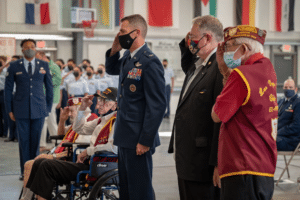
U.S. Air Force protocol offices across the globe manage a multitude of events: ceremonies, visits, conferences, meetings, official meals, and socials. These may be small bases with one or two protocol officers, or they may occur at our larger commands with upwards of 10 members on a team. Protocol officers and teams can be military or civilian or a combination. Some may have years of experience or there may be a brand-new Air Force member hired to take on the task. You can imagine the challenges a young member of the Air Force would have handling delicate situations that arise in our line of work. I remember, I was that brand new officer years ago in a protocol shop of one! When I started in this position years ago, there wasn’t training available. Today, the U.S. Air Force holds a Protocol Course to help incoming protocol officers get an overview and crash course on all the tasks we must manage.
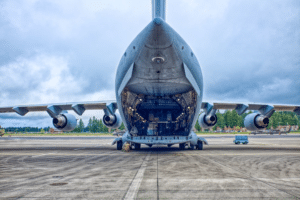
Overall, I think a protocol job in the Air Force is very similar to working protocol on the “civilian side.” (“Civilian” is how we refer to everyone else who isn’t military). Protocol officers across the globe work tasks such as invitations, seating, precedence, greetings, and gifts. USAF protocol is unique regarding our traditions and how and where we celebrate major events, accomplishments and lives of our people who serve. We may be performing our duties in the United States, the Middle East or Europe. We may be working in/out of a tent or a beautiful conference center. I’ve even managed an evening social in the belly of a C-17 Globemaster aircraft. Now that one was a challenge!
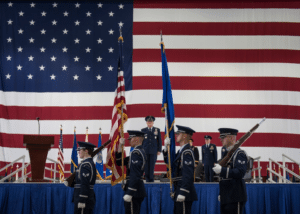
And ceremonies…we are all about ceremonies! We hold a change of command when commanders transition to/from their new position. This allows the people in the Command to witness the transition from one leader to another; we hold promotion and retirement ceremonies, reenlistment ceremonies, award, and decoration ceremonies. Air Force protocol officers oversee writing the scripts, creating the sequence of events, designing the stage and set up, the programs, the invitations and RSVPs. and briefing the hosting commanders on the plans of the event. We do this with very little money, usually on a short timeline, with limited manning, technology and a constantly changing environment. But we make it happen.
Another main function of a USAF protocol office is hosting guests visiting our bases. Our job is to support “VIPs” (we call them Distinguished Visitors or “DVs”). The majority of our visits are comprised of high level DVs (1-to-4-star generals), but can also include CEOs of large companies, foreign dignitaries and military officials, congressional or staff delegations and even our most senior government officials such as the Secretary of Defense and the President of the United States. We create and manage the itineraries, manage all the logistics, handle accommodations, set up the meals and orchestrate and dictate where all of our participants need to be. Some bases may receive only a few guests a year and other bases may receive many DVs a year (in a future article, I will discuss managing protocol at one of our busiest bases in the Air Force, Nellis AFB, Nevada). Certain bases will be busier with DVs depending on what missions exist (maybe aeromedical evacuation or fighter aircraft) or how many commands exist at a certain base (some have upwards of 40 different commands at one base).
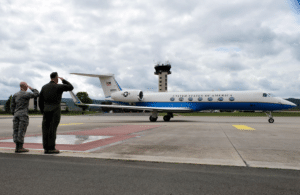
One of my favorite duties in protocol is being on the flight line! Many of our DVs will fly in a military aircraft directly to the Air Force Base. There is a specific protocol that takes place on the flight line when the aircraft arrives. We line up our “on site” commanders in proper order of precedence to greet the aircraft. When the aircraft taxi’s up to our “red carpet” (literally painted on the flight line) our commanders salute the aircraft. The on-board DV returns the salute by moving his/her window up and down. I love that moment on the flight line as the aircraft taxis up – the visit preparation is done, the aircraft with the words “United States of America” pulls into place, our military commanders salute, DV vehicles are lined up ready to move everyone…and it’s time show our guests the best our base and people have to offer.
Let me also tell you about our challenges of funding and manning. The U.S. government has limitations and strict rules on what we can spend on refreshments or gifts and who can receive those items as we are stewards of the American taxpayer dollars. And our manning challenge is due to funding and high turnover because our active-duty force moves every two to three years. In an office filled with mostly military personnel, a team will learn what to do, get off the ground, start doing great things, get settled and BAM, time to move to the next base. It’s tough, but it’s what we do. Thankfully we have more permanent civilians working in protocol today than when I began this field. The civilian workforce brings continuity to an office that needs it tremendously.
This is just a glimpse into our Air Force protocol world. Over the years, I have worked protocol jobs in the smallest of offices (including tents – literally) as well as the larger commands in a more corporate environment. I’ve worked these positions in the U.S., in Europe and the Middle East, with special agents, U.S. Secret Service, local and foreign police departments, and state and local governments. Protocol at all these locations is different due to considerations such as local culture and traditions, yet the same in that we are a hard-working group of people who love the thrill of planning/execution and bringing people together. We protocol officers get a front row seat to some of our Air Force’s most amazing moments: meeting/hosting senior leaders, witnessing historical events and helping to celebrate our people. It is an amazing career that happened to me by accident, and I could not be happier or prouder to be a part of it all.
All photos are courtesy of DVIDS (Defense Visual Information Distribution Service)

